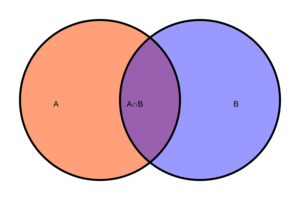Necessary and sufficient conditions facts for kids
In science and everyday life, we often talk about things that are "needed" or "enough" for something else to happen. These ideas are called necessary and sufficient conditions. They help us understand how different events or facts are connected.
A necessary condition is something that must be true for another thing to happen. If the necessary condition isn't met, then the other thing definitely won't happen. Think of it like a key for a lock: you need the right key to open the door. Without it, the door stays shut.
A sufficient condition is something that, if true, is enough to make another thing happen. If the sufficient condition is met, then the other thing will happen. It's like having a ticket to a concert: if you have a valid ticket, that's enough to get you in. You don't need anything else.
Contents
What is a Necessary Condition?
A necessary condition is like a requirement. For example, having oxygen is a necessary condition for a fire to burn. If there's no oxygen, a fire cannot exist. However, just having oxygen isn't enough to start a fire. You also need fuel and heat.
Examples of Necessary Conditions
- Having legs is necessary for a human to walk. (But just having legs isn't enough; you also need to be able to use them.)
- Being 18 years old is a necessary condition to vote in many countries. (But just being 18 isn't enough; you also need to be a citizen and registered.)
What is a Sufficient Condition?
A sufficient condition guarantees that something else will happen. For example, if you get a perfect score on a test, that is a sufficient condition to pass the test. You don't need anything else to pass.
Examples of Sufficient Conditions
- Pressing the "on" button on your TV remote is usually a sufficient condition to turn on the TV. (But it's not necessary; you might also turn it on using a button on the TV itself.)
- If it is raining heavily, that is a sufficient condition for the ground to be wet. (But it's not necessary; the ground could also be wet from a sprinkler.)
Necessary, but Not Sufficient
Sometimes, something is needed but not enough on its own.
- Having fuel in a car is a necessary condition for it to run. Without fuel, it won't go. But just having fuel isn't sufficient; the car also needs an engine, wheels, and a driver.
Sufficient, but Not Necessary
Sometimes, something is enough, but it's not the only way.
- Getting a taxi is a sufficient condition to get to school. If you take a taxi, you will get there. But it's not necessary; you could also walk, ride a bike, or take a bus.
When Both Are True
When something is both necessary and sufficient, it means it's the only way for something to happen, and it's all that's needed. In logic, this is often described using the phrase "if and only if" (sometimes shortened to "iff").
Example of Necessary and Sufficient
- Being a bachelor (an unmarried man) is a necessary and sufficient condition for being an unmarried man. If you are a bachelor, you are an unmarried man (sufficient). If you are an unmarried man, you are a bachelor (necessary).
Related pages
Images for kids
-
The sun being above the horizon is a necessary condition for direct sunlight; but it is not a sufficient condition, as something else may be casting a shadow, e.g., the moon in the case of an eclipse.
-
That a train runs on schedule can be a sufficient condition for arriving on time (if one boards the train and it departs on time, then one will arrive on time); but it is not always a necessary condition, since there are other ways to travel (if the train does not run to time, one could still arrive on time through other means of transport).





